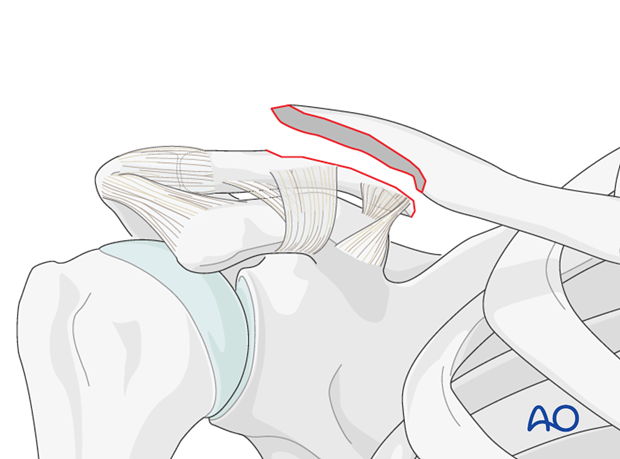Lateral, displaced fracture with CC intact, extraarticular clavicle fracture
Injuries that are characterized by a fracture line which starts medial to the coraco-clavicular ligaments and runs superolaterally are classified as 15.3A(a). While the main segment of the clavicle is displaced superiorly the smaller distal segment is held in place by the intact CC ligaments.
Definition: Distal fractures of the clavicle involve the clavicle lateral to a perpendicular line to the medial cortex of the coracoid base.
These fractures typically occur from a direct blow to the point of the shoulder such as from a fall in which the patient lands directly on the shoulder.
Epidemiology of these fractures is bimodal with young active patients sustaining injuries from sporting events, bicycling accidents, and motor vehicle collisions. Older patients typically sustain these injuries in falls from a standing height.
The history should include the age, activity level, comorbidities, and mechanism of injury as these will be used in the decision making regarding surgery. A thorough examination of the involved limb (and patient, if there is a high energy mechanism present) is mandantory prior to embarking on treatment.
Radiographic evaluation of a distal clavicle fracture includes an anterior posterior radiograph centered on the distal clavicle and a "upshot" or Zanca view which is angled 20 degrees cephalad: this allows the profile of the fracture to be seen clearly free of the scapula and rib cage. CT imaging is often obtained to assess better the fracture in the axial plane.














